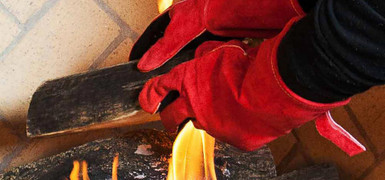Jun 17th 2020
Wood Stove Safety

No matter what type of heating appliance you heat your home with, there are certain safety precautions that you need to follow. This is especially true when heating with wood stoves where the combustion takes place right in your living area and when it comes to your home and family, you can never be too careful.
This article discusses the issues that you need to be mindful of when heating with wood. Some of the advice below is mandatory when heating with a wood burning stove while other points of focus are more like precautionary measures that will help you avoid costly accidents and protect your home and family.
Wood Stove Safety
Installation
It is recommended that you have a professional install your wood burning stove and chimney venting system. However, if you choose to install your wood stove application by yourself, be sure to follow the manufacturer's guidelines in the installation manual.
Wood Stove Size
To ensure safe heating with your wood stove, make sure you do your research and choose the right size wood burning stove for your application. A wood stove that is too small for your application simply won't heat the area adequately. A wood stove that is too large and powerful for your application are a fire hazard and could potentially have more devastating results.
Flue Collar/Chimney Vent Pipe Diameter
It is crucial that you match the size of the flue collar on your wood burning stove with the same size chimney vent pipe. Not matching the chimney diameter to the wood stove diameter will result in poor draft and excessive creosote formation which ultimately could cause a chimney fire or a house fire.
Clearances
In 2007, the National Fire Protection Agency reported that heating equipment too close to things that can burn such as upholstered furniture, clothing, mattresses, or bedding is by far the leading factor contributing to home heating fires and home heating fire deaths. So how can you prevent becoming part of a fire hazard statistic?
Make sure that your wood stove is installed a proper distance from combustible materials in the room. Refer to your wood stove manufacturer's manual for safe distances from walls for both stove and stove pipe and do not violate those distances by placing your stove any close than specified to those areas. Make sure that furniture, drapes and other combustibles are the recommended area away from the stove and be sure to keep them at that distance. Take a tape measure and rotate it around your stove to check and maintain these distances.
Single wall chimney connector usually has a clearance of 18" from combustible walls. This limitation can often be overcome by the use of special double wall interior piping or stove pipe heat shields, either of which can reduce the pipe clearance to as little as 9".
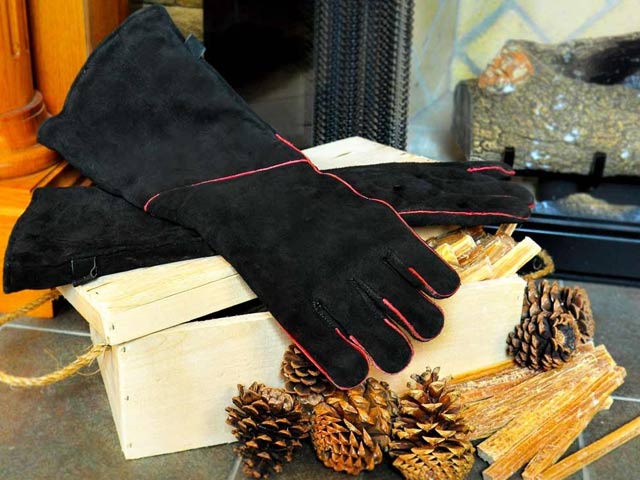
Wood Stove Accessories
Along with our selection of high performance wood stoves we also carry a variety of wood stove accessories to go along with them. In our wood stove accessories collection you will find wood stove thermometers, steamers, kettles, trivets, wood stove pain, catalytic combustors and wood stove maintenance items like stove gasket adhesive, gaskets and stove gasket cement.
Shop NowWood Stove Floor Protection
All Wood Stoves, listed and unlisted, will need stove boards. Stove boards offer a resilient non combustible surface for your wood burning stove. They are constructed with a special "thin set" bonding technique to withstand the weight and intense heat from the wood burning stove without cracking or splitting. The exact type of protection will vary depending on the design of the wood stove and how much heat is radiated downward. Listed wood burning stoves which have built-in bottom shields and convection chambers may need as little as 1/4" of ceramic tile beneath the stove. In this case, the floor protection is primarily to catch sparks which might escape during loading and cleaning of the wood burning stove. Other wood stoves may need more elaborate floor protection. Stove boards are available in a variety of colors and styles to fit any decor and simplify installation
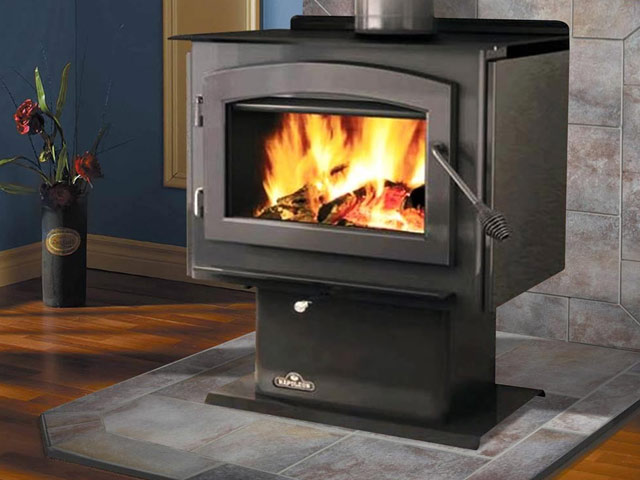
Hearth Pads
Hearth pads are sections of fireproof material that can be used underneath wood, pellet and gas stoves to protect floors from sparks and embers and on the back walls behind heating appliances to protect the walls from intense heat.
Shop NowWood Stove Child Protection
If you are heating your home with a wood burning stove and have young children you should invest in a child guard fireplace screen. child guard screens will not only protect your little ones against serious burns, it will also keep them from tripping and falling onto dangerous corners and hard rough surfaces surrounding your wood stove. Child guard fireplaces screens will also keep fireplace tools, firewood and wood holders, matches, and other fireplace equipment out of your child's reach so you don't have to worry about them using dangerous fireplace and wood stove equipment as play toys!
Fire Escape Plans
When using any heating appliance including a wood burning stove to heat your home it is imperative that you formulate an escape plan for your family in the event of a house fire. Create a designated meeting area on the outside of your home and practice escape routes from every room with your family. It's also a good idea to keep the phone number of your local fire department near your phone.
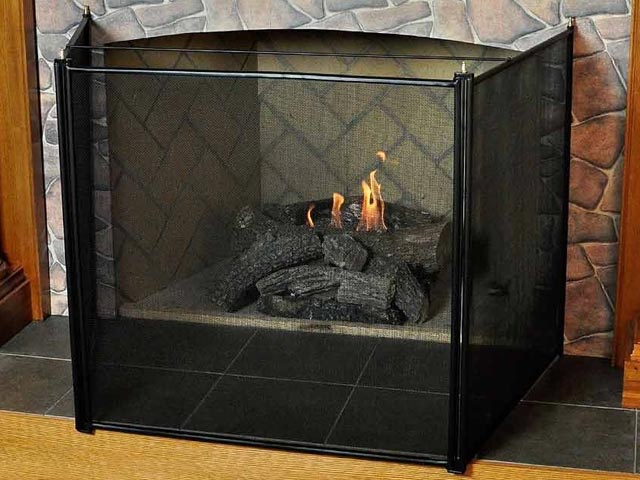
Child Safety Screens
Child guard screens create a barrier between the fireplace or wood stove and children and pets to protect them from burns and the hard surfaces that are often associated with hearth areas.
Shop NowWood Stove Safety - Basic Safety Equipment
Smoke and Fire Alarms
The two different types of smoke and fire alarms include:
-
Photoelectric - Quick at detecting smoky, smoldering fires.
. -
Ionization - Added protection of warning you of flaming, fast moving fires.
You can buy these smoke detectors and fire alarms individually or in combination. It is recommended that you install smoke alarms on every level of your home including the basement so that in the event of a wood stove fire, the smoke or fire can be detected and the alarm can be heard throughout the entire home. Smoke alarms should also be installed inside and outside of all bedrooms for extra safety. Be sure to install your smoke alarms at the correct level. You can figure out which correct positioning for your fire alarm consult instructions included with the alarm. If your smoke alarm is battery operated, be sure to change them annually.
Fire Extinguishers
When you heat your home with a wood burning stove , class ABC fire extinguishers should be strategically placed in accessible locations throughout your home. Class ABC fire extinguishers will put out most household fires including wood, paper, and garbage fires as well as gasoline and electrical fires. When choosing a fire extinguisher, look for one that has been tested by an independent laboratory. It is recommended that your fire extinguisher be located in a clean, dry area where it is easily accessible during fire hazards, and near an exit mounted so that the top is 3 1/2 to 5 feet above the floor and out of the reach of small children.
When operating a wood burning stove, the chance of having a carpet fire is always a possibility. In the event of a carpet fire, get your fire extinguisher and break the seal by pulling the pin. While squeezing the handle, aim at the base of the fire and sweep from side to side moving in closer as the fire is extinguished but not so close that you scatter the burning material and spread the fire. When the fire is out, back away and watch for possible reigniting. When you are sure the fire is out, evacuate and ventilate the area. Smoke and fumes from any fire may be hazardous.
***Never spray a fire extinguisher inside of a wood stove.
***Never test your fire extinguisher by discharging it slightly because it could depressurize it and render it useless when you need it.
***Be sure to read your fire extinguisher owner's manual and be sure that you fully understand how to use it in the event of a wood stove fire.
***Never leave the extinguisher unattended if the fire isn't out - it could explode from pressure build up. Some are rechargeable and more friendly to the environment and less costly over time.
***Extinguishers can become pressurized and the contents can settle as time passes so it's a good idea to have rechargeable serviced annually and disposables replaced as they age. Check the gauge monthly - check owner's manual and follow the guidelines.
In case of a fire evacuate everyone immediately, call the fire department even if the fire appears to be small- small fires quickly become large fires. Know how to use your extinguisher properly according to the instructions on the name plate and found in the manual. Be prepared to leave the area if the fire cannot be immediately controlled.
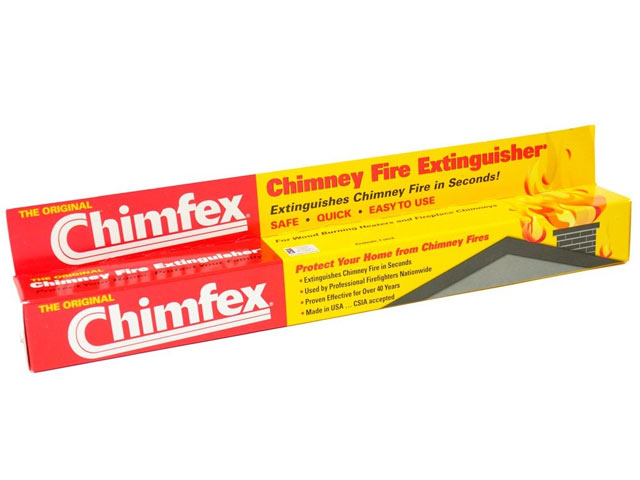
Chimfex Fire Suppressant
Child guard screens create a barrier between the fireplace or wood stove and children and pets to protect them from burns and the hard surfaces that are often associated with hearth areas.
Shop NowCarbon Monoxide Detectors
Carbon monoxide is a concern with any appliance where combustion is present especially wood burning stoves so installing carbon monoxide detectors throughout your home is highly recommended. When installing carbon monoxide detectors in accordance with your wood stove, proper placement is crucial.
Do not install the carbon monoxide detector directly above or next to your wood burning stove or it may create a false alarm when it detects a small amount of carbon monoxide on start up. If you are planning to only install one carbon monoxide detector, be sure to install it where it will wake you if you are sleeping. It recommended that you have a carbon monoxide detector on every level of your home as well as in or near every bedroom. Also, it should be kept at least 15 feet from heating and cooking appliances and very humid areas like bathrooms.
If the alarm sounds on your carbon monoxide detector, turn off all appliances that are a source of combustion, open all doors and windows to get fresh air into the home, and call a qualified stove technician and chimney sweep before relighting your wood burning stove. If anyone is experiencing any symptoms of carbon monoxide poisoning such as dizziness, headache, or vomiting, immediately call the fire department and go outside for fresh air. Do not go back inside until the problem has been resolved.
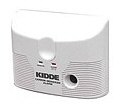
Stovepipe Thermometers
Stovepipe thermometers are of low price and high value and can make your wood burning lifestyle easier and more safe. Even if you're a seasoned wood burner, stovepipe thermometers can be beneficial because they indicate overheating and low burn temperatures while monitoring the optimal comfort and efficiency of the wood burning fire. The three types of stovepipe thermometers include:
Magnetic Stovepipe Meter
Magnetic stovepipe meters stick to the stove pipe magnetically and give you a reading based upon the temperature of the pipe. They are pretty inexpensive and work well for single wall chimney venting systems.
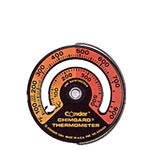
Magnetic Stove Top Meter
Magnetic stove top thermometers go directly on top of the wood stove and give a safe and efficient operating range based upon the temperature on top of the stove itself.

Woodstove Probe Thermometer
This style features a probe that measures the temperature in the center of the stove pipe. It can be used on single-wall pipe, but is designed specifically for double-wall pipe for which magnetic thermometers are not as effective.
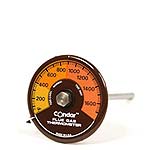
Additional Wood Stove Safety Tips
Season Your Firewood
Another key to wood stove safety is making sure that you know what to burn and what not to burn in your wood stove. In order for your wood stove to operate cleanly, efficiently and safely, you should only burn dry, well-seasoned hardwoods in your wood burning stove. Burning soft woods or firewood that is not well seasoned in your wood stove will produce smoky fires that will burn out quickly and increased amounts of creosote build-up on the walls of your chimney vent pipe.
Firewood that is well-seasoned and safe to burn in your wood burning stove will have a moisture content of 20 percent of less. Testing the moisture content of your firewood before burning it in your wood stove is quickly and easily done with a moisture meter. Moisture meters are inexpensive and all you have to do is press the four prongs into the firewood's split face to produce a moisture reading on a large black lit LCD display screen.
Some hardwoods that are safe and ideal to burn in your wood burning stove include but are not limited to oak, ash, maple, birch, basswood, beech, and aspen. To season your firewood stack it on a firewood rack off of the ground, loosely in a crisscross pattern so that air can circulate throughout the wood pile. You can speed up the drying process by covering up the stacks and placing them in a sunny and breezy location.
Some things that are unsafe to burn in your wood burning stove include:
Plastic
Garbage
Driftwood
Glossy paper
Painted wood
Pressure treated wood
Burning any of the above items in your wood burning stove will release toxic chemicals into the atmosphere as well as your home, and could cause damage to your wood stove. For example, a catalytic combustor in a wood stove can be destroyed by certain chemical agents found in above items.
Wood Stove Cleaning and Maintenance
Cleaning your wood stove and your chimney venting system regularly is important to achieve safe and efficient operation with your wood burning stove. Cleaning your wood burning stove should be done as needed and includes removing excess ash and cleaning the glass on your wood stove door if applicable. A few tools that will make this chore easier include an ash bucket or ash vacuum, a broom, and a shovel. Never use glass cleaners with ammonia in them because they will break down the structure of the ceramic glass. Glass cleaners like the Conditioning Glass Cleaner by Rutland are specifically formulated to clean ceramic glass and will safely and gently clean your wood stove glass doors. Never clean your wood stove glass door while it is still hot. To safely clean it, wait for it to cool down.
Your chimney vent pipe should be cleaned at the beginning of every wood burning season, and at the end of every wood burning season. The National Fire Protection Agency recommends that you have your chimney venting system inspected and cleaned annually for safe and efficient wood stove operation.

Woodstove Maintenance Items
Our wood stove maintenance items include fireplace and wood stove glass cleaner, masonry patch, high temperature stove paint, furnace and gasket cement, creosote remover, soot remover, fireplace deodorant, brick and stone cleaner and more.
Shop NowAlways remember to follow the installation instructions provided by the manufacturer in your wood stove owners manual. Read the manual completely and be sure that you understand how to safely operate your wood burning stove. We hope these wood stove safety tips have provided you with all of the information that you need and more to enhance your wood burning life style and safely get you and your family through many wood burning seasons.

